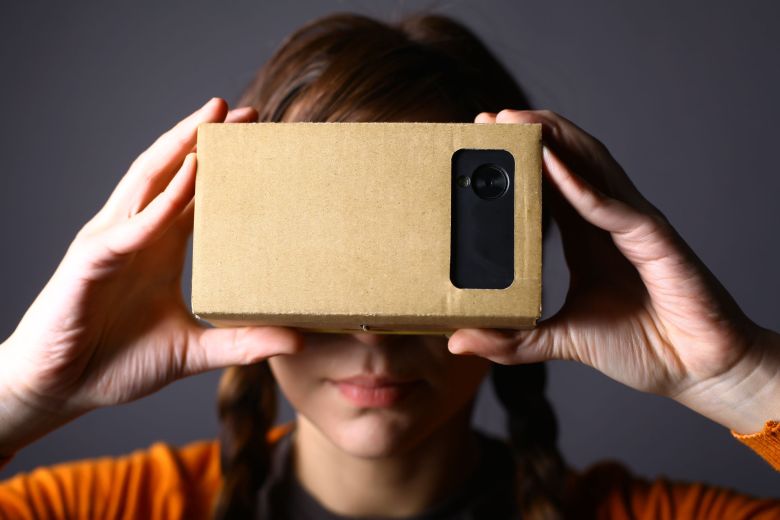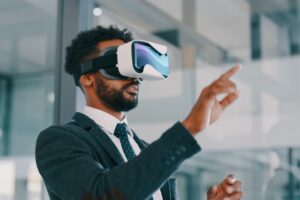After the COVID-19 crisis, where will the cutting edge of experiential tech be?
The digital transformation of the past 12 months has brought 10 years’ worth of innovation, but we aren’t all connecting to the network with VR headsets just yet.

After a year of Zoom meetings, virtual conferences and innovation, creating a virtual world to make up for lost in-person connection during COVID-19, the world feels like a very different place.
Many corporate offices have yet to return to their workspaces, or are considering hybrid workforces with increased remote work, super-commuters and reimagined collaboration. And yet, the amount of digital transformation that our world has undergone still stops short of some of the prognostications about the advent of VR and the future of online connection. We’re not yet to the point where everyone has a VR headset in their home.
So how are smart communicators and marketers using technology to connect to audiences—and what does technology’s cutting edge offer for brands looking to fill the gaps as in-person interaction slowly returns later in 2021?
Ryan Schmidt, head of technology at Landor & Fitch, warns against going for what he calls “shiny object syndrome.” Instead, he recommends starting with a goal about self-presentation. A question his team asks whenever starting a new project: “How does this fulfill or exceed the expectation of how a customer or brand wants to present themselves in the world?”
That might take the team towards creating a virtual reality or augmented reality experience. Or it might lead the team to a much more low-tech creation. Schmidt says that for one client, his team took the digital completely out of the campaign, making the product a tactile experience that customers could interact with.
Bridging the gap between physical and digital
Schmidt puts the innovations he is seeing around creating digital alternatives to physical experiences into three buckets— “strategic technical architecture,” “virtual worlds” and flexibility in the creative process.
First is the actual architecture to be able to create a digital experience for a consumer, something that requires a lot of work on the back end enable a seamless front-end experience. “Oftentimes it becomes a conversation about ‘How do we create a roadmap from a technology perspective to get you to your ambition?’” Schmidt says. Without the infrastructure in place, organizations are limited in what they can accomplish with offering a digital experience to consumers.
It’s in these conversations that Schmidt offers the phrase “minimum viable experience” (MVE), a coinage borrowed from the tech industry’s “minimum viable product.” For Schmidt, MVE allows the team to iterate, creating one experience on a small scale and then building upon what works.
It’s this iterative process that is part of his third bucket, the flexibility in the creative process, which drives innovation for the team and its clients. “So if we’re building a physical space, sometimes we will test,” Schmidt says. “We might build a pop up for a touchpoint or an experience, instead of building it into a store, and that allows us to evolve quickly from an infrastructure standpoint.”
And when it comes to the actual virtual world? That’s about being able to put yourself in consumers’ shoes, Schmidt says.
Empathy, empathy, empathy
“Empathy is at the core of the design thinking,” Schmidt elaborates, “being able to put yourself outside of your own experiences and understand the world through a different lens.”
It also requires self-knowledge, understanding authentically what the brand is, its culture and its people, and how it interacts internally,. Only from a foundational understanding can you start to build the virtual world on top of these core values, Schmidt explains.
Technology should be used to fill a human need, and experiences that try to fill those needs empathetically are the only creations that are likely to have long-term success. To evaluate your offerings, Schmidt recommends taking it back to the MVE and using your test run to understand what is connecting and what isn’t.
The customer ecosystem
To understand how various touchpoints interact with each other and move a customer along a buyer’s journey, Schmidt offers a different model.
“One thing that’s been happening for a long time now is the move from a singular linear customer journey to a curated ecosystem of experiences,” Schmidt says. Therefore, it makes sense to offer a mix of experiences and touchpoints, both physical and digital, to draw in and engage consumers. Instead of thinking of e-commerce, or traditional shoppers following one path or another, it’s crucial for brands to consider how consumers will experience multiple touchpoints with a brand or organization.
The ecosystem of experiences also allows for scale, Schmidt says, building experiences on top of each other. Where brands often go wrong, Schmidt says, is in trying to do too much too fast, and then floundering in the deep end with a tech experience that offers nothing of substance to a consumer trying to evaluate a purchase.
Instead, start small. Embrace the minimum viable experience and build on what is working to find your footing in an increasingly digital marketplace.







